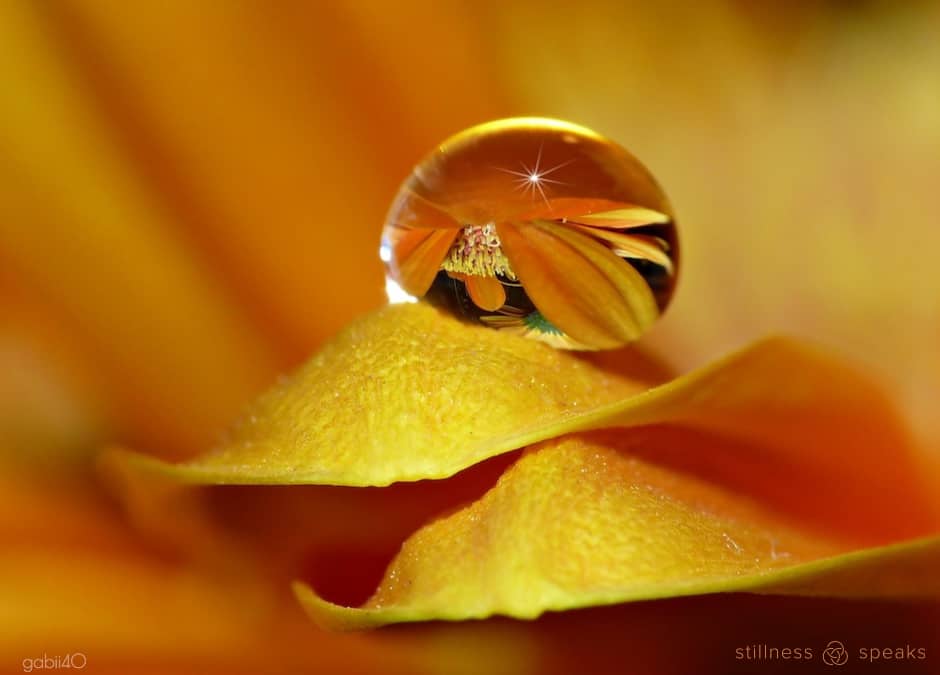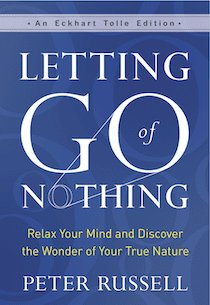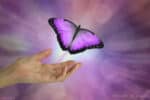letting in: “… To let in an experience means to allow it more fully into awareness …” ~ Peter Russell
“… The inner eye is its own reflection …” ~ Deng Ming-Dao
Letting In to Let Go?? … Huh?!? … sounds counterintuitive, doesn’t it? … but before digging into that, just a few words on letting go …
Breathing in, I contemplate letting go.
Breathing out, I experience the joy of letting go.This is the closing segment of Thich Nhat Hanh’s guided meditation for the practice of stopping and letting go. Amongst many other benefits, this simple act of breathing out lets us directly experience the physical act of letting go – which brings at least a momentary relief, which, as Thay rightly reminds us, is joy – the joy of letting go. Breathing, of course, is our life line and is available to all of us, at all times! Bringing more conscious awareness to the act of breathing can naturally strengthen the “muscle” of letting go.
The essence of meditation is to allow thoughts to come, linger, and go without acting on them – which is yet another practice of letting go. Of course, this simple practice also has profound beneficial implications.
In the classic Chinese text I Ching, the Book of Changes, the hexagram Keeping Still (Meditation) offers advice about navigating emotions (amongst other insights) … and suggests three things, the 2nd of which is to observe the bodily emotions, not judge or resist them but simply watch them come, linger, and go without acting on them. Again, this “practice” of letting go also has many benefits.
The above are just three examples of the “encounter with letting go” … in the journey of self discovery. Each is a simple act and yet it is not easy as anyone undertaking it soon discovers 🙂
In his book Letting Go of Nothing, Peter Russell takes us on a deep dive into this topic and devotes a chapter to the matter of “not easy” … before covering the very 1st step in letting go, which he posits is letting in (yet another chapter) …
This chapter is the focus of this post or part 2 of our multi-part series offering an in-depth preview of his book through excerpts …
… Part 1, was the Foreword by Eckhart Tolle … which set the stage for the series. …
This book is An Eckhart Tolle Edition (an imprint of New World Library – the publisher of Peter’s book) that offers “… life-changing works, both old and new, that have been personally selected by Eckhart Tolle … books that can powerfully aid in transforming consciousness and awakening readers to a life of purpose and presence.”
All italicized text below is from Letting Go of Nothing: Relax Your Mind and Discover the Wonder of Your True Nature by Peter Russell and is published here with his generous permission. Peter has also generously offered a free downloadable PDF of the Table of Contents (link is at the bottom of the post).
Here are all of Peter’s posts on Stillness Speaks … and his website – a treasure trove of wisdom: rich, diverse, and valuable content for your journey … and his YouTube channel where he posts videos regularly.
Letting In
The first step in letting go is to let in. Initially, this may sound counterintuitive. We assume that letting go of something means getting rid of it, pushing it away. If we want to let go of some grievance, we may try not to think about what the other person did and how awful they were. Or if we want to let go of our attachment to money, we may try to stop worrying about our finances, pushing such concerns to the back of our mind. However, the central idea of this book is that we should do the opposite. In order to release the grip our mind has on some attitude or idea, we first need to let in the experience of holding on. If we are not aware we are holding on to a rock, we cannot let our grip relax.
To let in an experience means to allow it more fully into awareness, to become curious about what is going on. Let’s take as an example some bodily discomfort or tension. You may already be aware of discomfort somewhere in the body. If not, be curious whether there might be something you haven’t noticed. Some sensation may then reveal itself. It was probably on the edge of your awareness, but because your attention was focused on reading the book or some other experience, you didn’t notice it. Innocent curiosity opens you to the possibility that you might have missed something, giving it the opportunity to enter your awareness.
When you do notice physical discomfort somewhere, let it in, be curious about how it feels. It might appear as tightness, a muscle ache, or a feeling of pressure somewhere. How far does it spread? Is it localized or more diffuse? The key is opening your awareness to what is rather than trying to change anything.
We can apply the same principles to more painful experiences that may initially seem much harder to let in. We tend to turn our attention away from pain, distracting ourselves with some task, becoming numb to it, or resorting to painkillers to get rid of (or at least subdue) the pain. We fear that if we let the pain in, it will hurt more. And that’s the last thing we want.
Yet pain calls for the very opposite. Pain evolved to alert organisms to bodily damage or dysfunction. It is meant to be unpleasant. It is a call for attention, the body’s alarm bell: Hey! There’s something wrong here. Attention, please. Rather than ignoring it, resisting it, or trying to make it go away, we can give pain the attention it is requesting.
If we follow this call, and open up to the pain — taking the risk of letting in how it feels — we may find it does at first seem stronger, just as we feared. But as we explore it more, becoming interested in what is actually there, we find that what we had labeled as a pain or an ache now becomes more specific, perhaps a sharpness here or a tightness there; maybe it’s a sense of pressure, a stinging, a prickling, or some other sensation.
~ Peter Russell
And, click here for the free, downloadable PDF of the Table of Contents.
Stay tuned for more from Peter’s book …
=== ==== ===
Letting Go brings us the gift of inner peace which, inevitably, leads to appreciating the oneness of us all … and in that spirit let us minimize (& hopefully dissolve) the current humanitarian crisis unfolding in Ukraine … by helping in whatever way we can … and to that end here are some options:
1) NPR: Want to support the people in Ukraine? Here’s how you can help
2) Washington Post: Here’s how Americans can donate to help people in Ukraine.
3) Go Fund Me: How to Help: Donate to Ukraine Relief Efforts.
4) USA Today: Want to support the people of Ukraine? These apps and websites can help you send money.
— — — —
We are all facing financial challenges but IF your situation allows you to donate and help then please do so …
THANK YOU!
=== ==== ===









